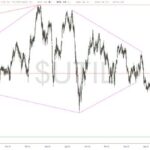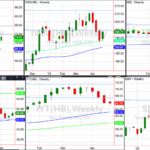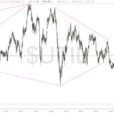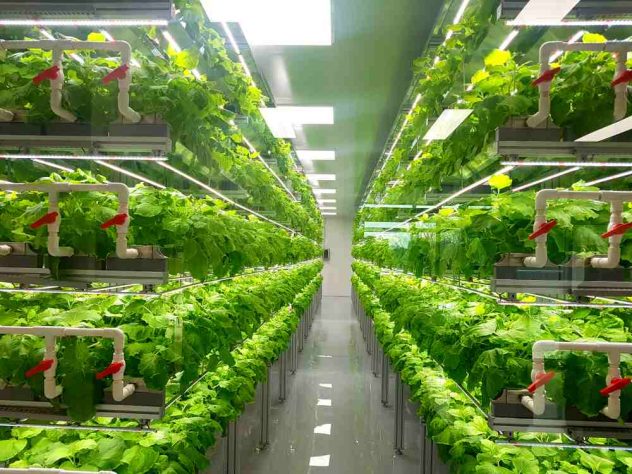
Bolstered by its resource efficiency, its environmentally-friendly record, and the fine-tuned control and customization options it offers, the vertical farming market is projected to hit $22 billion globally by 2026.
The vertical farming scene is booming. Vertical farming, also sometimes called indoor farming, makes it possible to produce crops year-round under fully controlled conditions.
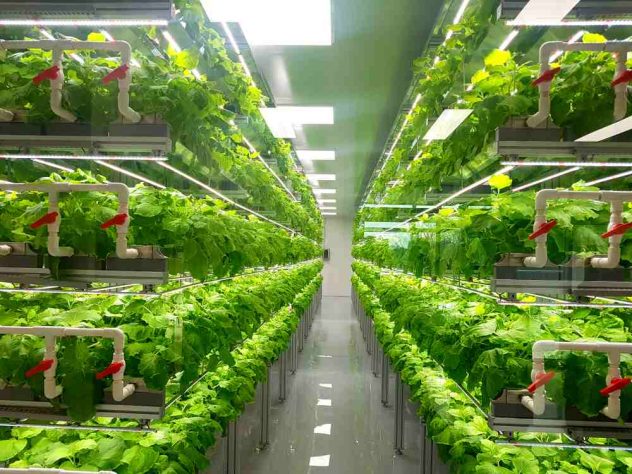 Unlike greenhouse farming, vertical farming does not rely on solar light. Instead, it harnesses LED technology to supply plants with the ideal wavelengths during every stage of their development.
Unlike greenhouse farming, vertical farming does not rely on solar light. Instead, it harnesses LED technology to supply plants with the ideal wavelengths during every stage of their development.
For many people, indoor farming is a down-to-earth hobby.
But for countless large-scale vertical farming initiatives it’s a serious business venture. The same is true for companies supplying lighting, irrigation, fertilization, and temperature control equipment for indoor farming.
Recent numbers indicate that business is likely to take off.
By 2026, the vertical farming market is projected to hit $22 billion globally – up from $3 billion in 2018.
In Europe, the vertical farming market was worth $0.85 billion this year. Until 2025, it’s expected to expand to $2.31 billion, growing at a CAGR of 22%.
Here are the most important factors currently fuelling the growth of the indoor farming industry.
Resource efficiency
A major advantage of vertical farms in comparison to traditional agriculture is their resource efficiency.
With regard to water, for example, they use only a fraction of the amount required for outdoor farms. To grow a kilogram of vegetables, a vertical farm only requires 2-4 litres of water – rather than the 60 litres needed in a Mediterranean field.
With climate vagaries and resource shortages likely ahead, this efficiency offers an added element of reliability and security to production systems.
Green & clean
Indoor farming also scores points for being environmentally friendly and clean in other ways.
Vertical farms can be very close to their target markets, cutting shipping costs and emissions.
Since the indoor environment can be easily controlled, no pesticides or herbicides are needed to grow crops. Recent developments in equipment for vertical farming aim to minimize waste, avoid plastic, and optimize resource utilization.
Apart from reducing investment and maintenance costs for operators, these advantages of vertical farming present compelling selling points for increasingly environmentally conscious food shoppers.
Climate independence
Considerations of food security are also key contributing factors to the increase of interest in vertical farms.
As recent disasters have demonstrated, climate change heavily impacts agricultural production. Indoor farming offers a unique set of solutions.
With vertical farming, it’s possible to locally grow produce regardless of season, weather conditions, and external market forces.
For investors looking to build a solid portfolio in the time of climate change, these aspects weigh in favour of indoor farming.
Transparency & customization
Consumers today value transparency and products adaptable to their particular tastes. The tightly controlled environment of vertical farming makes it possible to meet these demands.
Vertical farms can let customers know exactly what resources were involved in the creation of each individual product, and where it came from. In addition, it’s possible to adjust growing conditions to favour specific flavour characteristics that appeal to consumers.
All in all, this type of farming benefits from its capacity for resource efficiency and climate independence, as well as customers’ preference for environmentally friendly, clean, transparent products. With the promising projections ahead, investors are likely to take advantage.



